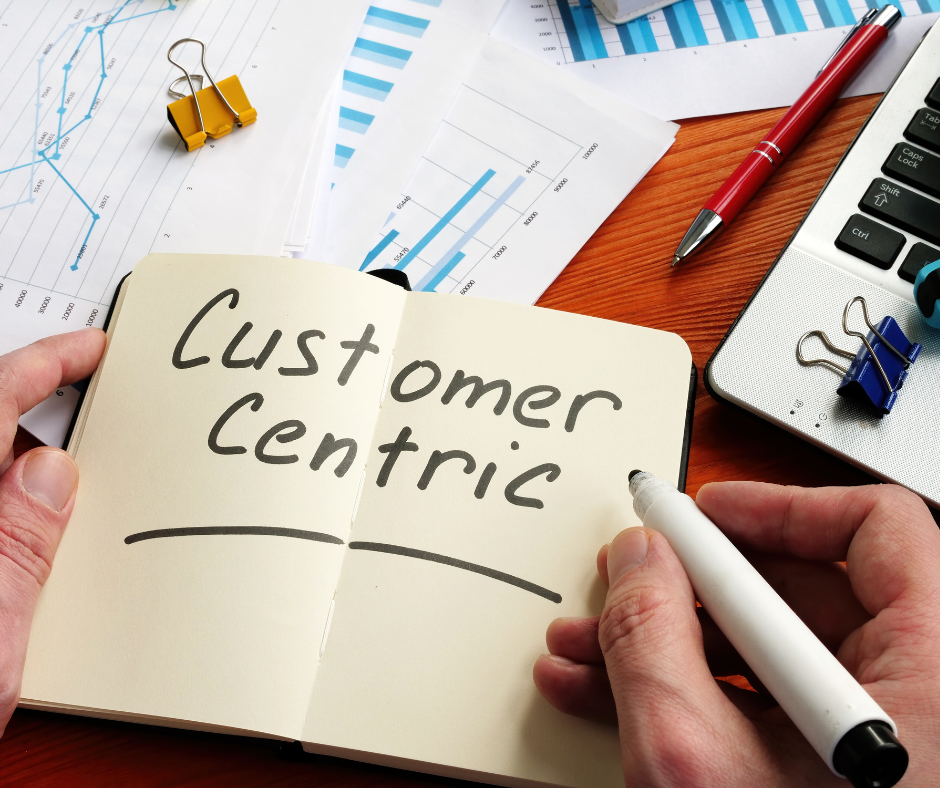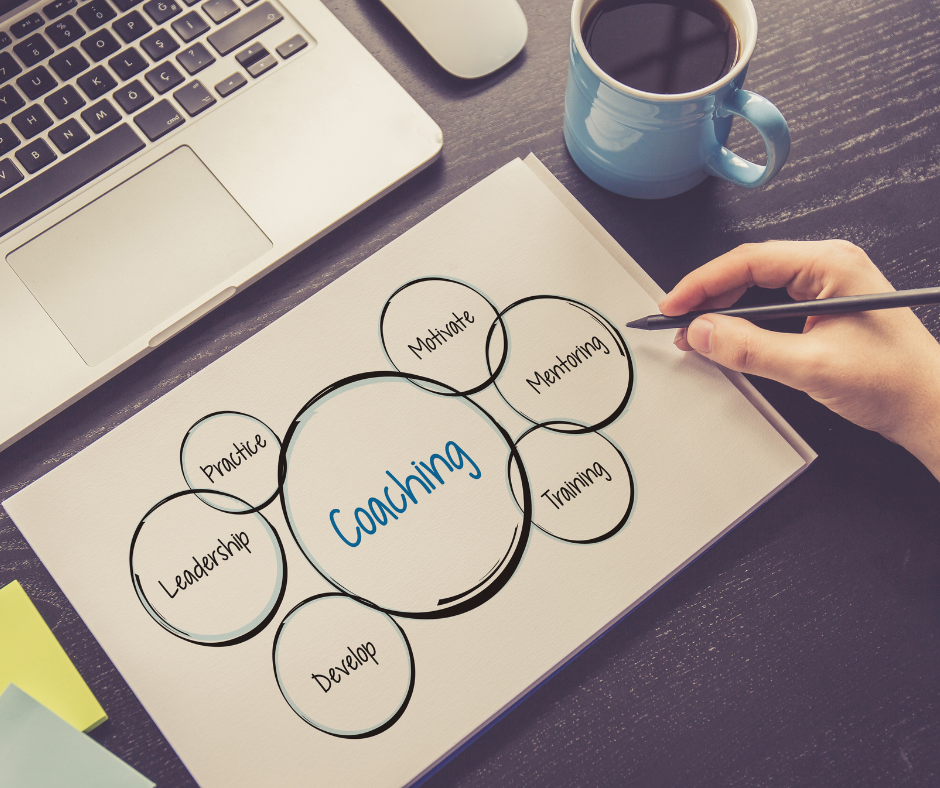Customer demands, market trends, and organizational requirements shift quickly. This is particularly true now when businesses are being told to accomplish more with less due to a crisis in the world's supply chains and an increase in prices.
How can companies swiftly expand their brand to satisfy new needs? By utilizing headless commerce's adaptability and agility.
Most likely, you've heard of headless commerce.
One of the keywords used most frequently in e-commerce but least understood is this one. To set the record straight, this essay will outline the typical elements of a headless commerce system.
- Firstly, what is Headless Commerce?
- What are the Benefits of Headless Commerce?
- Drawbacks of Headless Commerce
- How does Headless Commerce impact your Customers?
- How do you get started with Headless Commerce?
- 5 differences Headless Commerce vs. Traditional E-commerce
- Headless Commerce Use Cases
- How Headless Commerce supports Omni-Channel Retail
- How Deskera Can Assist You?
- Key Takeaways
- Related Articles
Firstly, what is Headless Commerce?
Headless commerce is a type of e-commerce architecture that separates the front-end user interface (UI) from the back-end systems and databases that manage the data and functionality of the e-commerce platform. This allows for greater flexibility and scalability in building and managing e-commerce experiences, as the front-end UI can be built and managed independently of the back-end systems.
Headless commerce also allows for the use of different front-end technologies, such as mobile apps, voice assistants, and chatbots, to create unique and personalized e-commerce experiences. Additionally, it allows for the decoupling of the front-end and back-end systems, enables faster development and deployment of new features, and allows for better scalability and performance.
Headless commerce architecture uses APIs to connect the front-end and back-end systems. It enables teams to work independently, with the front-end developers working on the UI and the back-end developers working on the functionality and data management. It allows for a more efficient development process and faster time to market for new features and functionality.
However, it requires greater technical expertise and resources to implement and maintain the separate front-end and back-end systems, and it may also require additional development and testing to ensure seamless integration between the two.
What are the Benefits of Headless Commerce?
Let us look at some of the benefits of headless commerce:
- Flexibility: Headless commerce allows for greater flexibility in building and managing e-commerce experiences, as the front-end UI can be built and operated independently of the back-end systems.
- Personalization: Allows for using different front-end technologies, such as mobile apps, voice assistants, and chatbots, to create unique and personalized e-commerce experiences.
- Faster development: Decoupling the front-end and back-end systems enable more rapid development and deployment of new features.
- Improved scalability: Allows for better scalability and performance by separating the front-end and back-end systems.
- Multi-channel support: Headless commerce allows for creating e-commerce experiences across multiple channels, such as web, mobile, and voice.
- Better customer experience: Allows for a more consistent and seamless customer experience across different channels and devices.
- Easier integration: With APIs, headless commerce allows easy integration with other systems and platforms, such as marketing automation and analytics tools.
- Greater control: Gives businesses greater control over their e-commerce platform, as they are not tied to a specific vendor or platform.
- Better security: With headless commerce, businesses have more control over their data and can better secure their e-commerce platform.
- Cost efficiency: As the front-end and back-end can be developed and managed independently, it can lead to cost efficiency.
Drawbacks of Headless Commerce
Headless commerce has several potential drawbacks to consider, including:
- Complexity: Headless commerce systems can be more complex to set up and maintain than traditional e-commerce platforms, as they require separate systems for the front-end and back-end.
- Development costs: Building a headless commerce system from scratch can be more expensive than using a traditional e-commerce platform, as it requires more specialized expertise.
- Limited functionality: Some features and functionalities that are built-in to traditional e-commerce platforms may not be available in a headless commerce system, limiting the site's capabilities.
- Integration challenges: Integrating a headless commerce system with other systems and platforms, such as marketing automation tools or CRMs, can be more complicated than traditional e-commerce platforms.
- Limited vendor support: Because headless commerce is a relatively new concept, limited vendor support may be available for troubleshooting and maintenance.
It's essential to weigh the benefits of headless commerce against these potential drawbacks and decide if it's the right approach for your business's needs.
How does Headless Commerce impact your Customers?
Headless commerce can impact customers in several ways, including:
- Improved user experience: Headless commerce creates more personalized and seamless e-commerce experiences across different channels and devices, leading to a better overall user experience for customers.
- Increased engagement: With the ability to create unique and personalized e-commerce experiences, headless commerce can lead to increased customer engagement and conversion rates.
- More convenient: The ability to purchase products or services via different channels such as mobile apps, voice assistants, and chatbots can make the shopping experience more convenient for customers.
- Faster loading time: By decoupling the front-end and back-end systems, headless commerce can lead to faster loading times for e-commerce sites, which can benefit customers.
- Greater security: By having more control over their data, businesses can better secure their e-commerce platform, giving customers more confidence in their transactions.
- Greater flexibility: Headless commerce allows businesses to create and update their e-commerce platform with more flexibility, which can result in more varied and dynamic offers for customers.
- Greater personalization: As headless commerce allows for greater personalization in the e-commerce experience, customers may feel more understood and valued, leading to increased loyalty.
It's important to note that while headless commerce can bring many benefits for customers, it also requires a high level of technical expertise to implement and maintain. Therefore, it's important to ensure a seamless integration between the front-end and back-end systems to provide a smooth customer experience.
How do you get started with Headless Commerce?
Getting started with headless commerce can be a complex process, but here are some general steps to consider:
- Assess your current e-commerce platform: Evaluate your current e-commerce platform to determine if it can support a headless architecture. Consider factors such as scalability, customization, and security.
- Define your requirements: Determine what specific features and functionality you need for your e-commerce platform. This will help you identify which technologies and platforms will be most suitable for your headless commerce implementation.
- Choose your front-end and back-end technologies: Decide on the front-end and back-end technologies you will use for your headless commerce implementation. Be sure to consider factors such as scalability, security, and ease of integration with your existing systems.
- Build your APIs: Build the APIs that will connect your front-end and back-end systems. This is a crucial step in the headless commerce process, as the APIs will be the backbone of the integration between the two systems.
- Develop your front-end: Use your chosen front-end technologies to develop the user interface for your e-commerce platform.
- Test and deploy: Test your headless commerce implementation to ensure that it is working as expected and that there are no issues with the integration between the front-end and back-end systems. Once everything is working correctly, you can deploy your headless commerce platform to production.
Headless commerce refers to a type of e-commerce architecture where the front end (i.e. the part of the system that the customer interacts with) is decoupled from the back end (i.e. the part of the system that manages the catalog, inventory, and order management). This allows for more flexibility in terms of the front-end technology that can be used and the ability to easily integrate with other systems.
Traditional e-commerce, on the other hand, refers to an architecture where the front-end and back-end are tightly coupled, with the front end being built using the same technology stack as the back end. This can make making changes to the front end or integrating with other systems more complex.
In summary, Headless commerce allows for more flexibility and ease of integration with other systems, while traditional e-commerce is more limited.
5 differences Headless Commerce vs. Traditional E-commerce
- Front-end and Back-end separation: In Headless commerce, the front-end and back-end are decoupled, allowing for more flexibility in terms of the technology used for each. In traditional e-commerce, the front-end and back-end are tightly coupled.
- Flexibility in front-end design: Headless commerce allows for more freedom in terms of the front-end design and user experience, as the front-end can be built using any technology stack and can be easily integrated with other systems.
- Integration with other systems: Headless commerce allows for easy integration with other systems, such as marketing automation tools, CRM systems, and more, as the front-end and back-end are decoupled.
- Scalability: Headless commerce is more scalable as the front-end and back-end can be scaled independently. At the same time, traditional e-commerce can face scalability issues as the front-end and back-end are tightly coupled.
- Speed of development and deployment: In headless commerce, the front-end and back-end can be developed and deployed separately, which allows for faster development and deployment. In traditional e-commerce, the front-end and back-end are tightly coupled, which can slow down development and deployment.
Headless Commerce Use Cases
Headless commerce can be beneficial in a variety of use cases, including:
- Progressive Web Applications (PWA): PWAs are web-based applications that look and feel like native mobile apps, and a headless commerce architecture allows for a seamless integration of the e-commerce functionality into the PWA.
- Multi-channel commerce: A headless commerce architecture allows for the separation of the front-end and back-end, making it easier to create and manage different front-end experiences for different channels, such as mobile, web, and voice assistants.
- Personalization: A headless commerce architecture allows for more flexibility in creating personalized experiences for users, as it allows developers to access and leverage customer data stored in the back-end easily.
- B2B e-commerce: A headless commerce architecture allows for the creation of custom B2B e-commerce experiences, such as the ability to create custom pricing and product catalogs for different types of customers or groups.
- High-traffic sites: A headless commerce architecture allows for better scalability for sites that experience high traffic, as the front-end and back-end can be scaled separately to handle the load.
- Innovation: A headless commerce system allows for innovation on the front-end side, allowing developers to use any front-end framework or language they are comfortable with.
It's important to note that headless commerce is not a one-size-fits-all solution and it's important to evaluate if it's the right fit for your use case.
How Headless Commerce supports Omni-Channel Retail
Headless commerce supports omnichannel retail by providing a flexible and decoupled architecture that allows for the creation of different front-end experiences across multiple channels, such as mobile, web, and voice assistants while utilizing the same back-end infrastructure. This separation of the front-end and back-end allows for the following benefits:
- Consistency: The back-end infrastructure provides a single source of truth for product data, inventory, and pricing, ensuring consistency across all channels.
- Customization: The front-end can be customized for each channel, providing a unique and optimized experience for each channel.
- Scalability: The front-end and back-end can be scaled separately, allowing for better scalability in high-traffic situations.
- Integration: The back-end can be integrated with other systems, such as CRM, Marketing automation tools, and Point-of-sale systems to provide a seamless experience across all channels.
- Flexibility: The decoupled architecture allows for experimentation and innovation on the front-end, as it enables the use of any front-end framework or language that the developer is comfortable with.
Headless commerce allows retailers to create a consistent and personalized experience across all channels while leveraging the same back-end infrastructure, which can ultimately increase sales and customer engagement.
How Deskera Can Assist You?
Whether you are a sales manager or running your own business, there are tons of duties and responsibilities that you have to fulfill. Using the Deskera CRM system, you can manage your contacts, leads and sales deals. You can use the CRM system to manage all customer data and manage your leads, sales negotiations and deals.
Doing so will help you to save the time taken in transferring customer data between the different systems. Having a good CRM system will help you manage your financial and sales reports and be prepared to kick-off your meetings.
Deskera can also assist you with real-time updates about your business like cash flow status, customer satisfaction, inventory management, sales, purchases, purchase orders, customer tickets, customer satisfaction, managing leads, revenues, profit, and loss statements, and balance sheets.
Moreover, it would also help in integrating sales methodology across different platforms onto one system so that you have a consolidated list for email campaigns, leads management, and sales pipeline to mention a few.
It will also help you to sync between your orders, payments, taxes, refunds, product variants, sending out invoices and reminders, facilitating invoice management, and even undertaking follow-ups and advertisement campaigns.
Such a consolidated platform will help you to improve your sales through building effective sales compensation plans and also facilitate faster and well-informed decision-making. It will help you in strengthening your opportunities and being braced for the threats.
Deskera books and Deskera CRM will also be able to ensure the highest customer satisfaction and thereby an increase in net revenues and net profits.
Key Takeaways
- Headless commerce is a modern approach to e-commerce that separates the front-end and back-end of an e-commerce platform
- Headless commerce allows for more flexibility in creating personalized experiences for users
- A headless commerce architecture allows for the separation of the front-end and back-end, making it easier to create and manage different front-end experiences for different channels
- A headless commerce system allows for innovation on the frontend side, as it allows developers to use any front-end framework or language that they are comfortable with.
- The front-end and back-end can be scaled separately, allowing for better scalability in high-traffic situations
- Headless commerce systems can be more complex to set up and maintain than traditional e-commerce platforms, as they require separate systems for the front-end and back-end
- The back-end can be integrated with other systems such as CRM, Marketing automation tools, and Point-of-sale systems to provide a seamless experience across all channels
Related Articles











